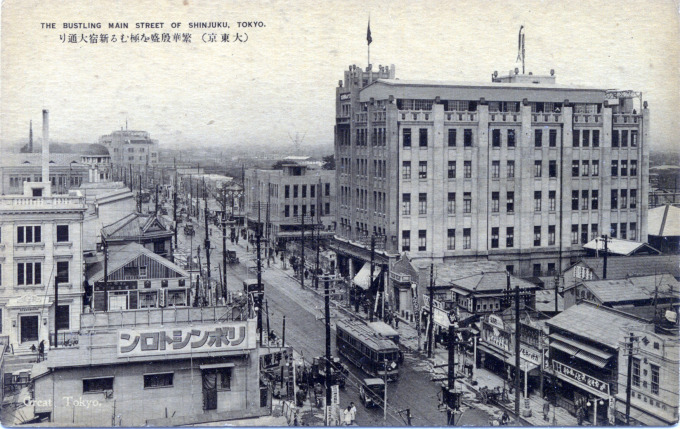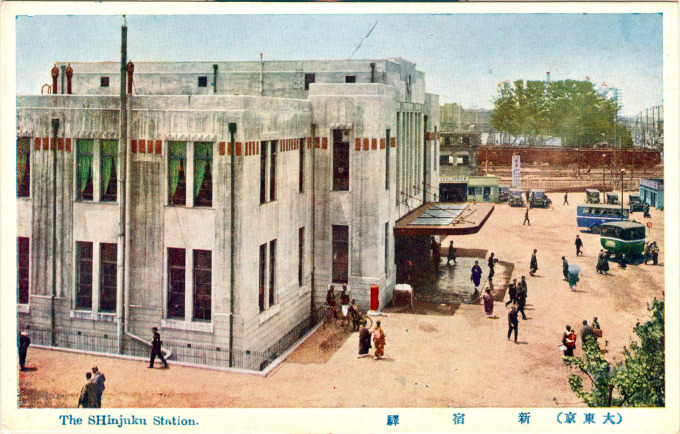
A diminutive Shinjuku Station, east entrance, c. 1930, is seen at center in the image. The larger, multi-story building is the Hoteiya department store.
See also:
Shinjuku Station, Tokyo, c. 1930
Hoteiya department store, Shinjuku, Tokyo, 1929.
Isetan Department Store, Shinjkuku, c. 1935
View of Shinjuku at Night, c. 1960
“[D]emographic shifts to the west and south in 1924 and 1925 initiated a new phase in the expansion of Tokyo’s transporation and marked a second growth spurt for its suburbs… [L]arge terminals were constructed to accommodate the increased vehicular and passenger traffic. The most important was Shinjuku Station. Located west of the political and financial center of the city, Shinjuku Station became Tokyo’s most-used terminal beginning in 1925.
“… Shinjuku was the vortex of ‘modern life,’ where newness and normality, mediocrity and excitement converged and encircled the station. Shinjuku continues to play this role today. The station is the busiest [rail terminal] in the world.”
— Tokyo in Transit, Alisa Freedman, 2010.



Pingback: Shinjuku Then and Now - Blog
Pingback: Isetan Department Store, Shinjuku, c. 1935. | Old Tokyo
Pingback: View of Shinjuku at Night, c. 1960. | Old Tokyo
Pingback: Shinjuku Station, Tokyo, c. 1930. | Old Tokyo
Pingback: 写真で見る新宿の今と昔:「新宿」の名前の由来は? - 外国人不動産トピックス
Pingback: Hoteiya department store, Shinjuku, Tokyo, 1929. | Old Tokyo